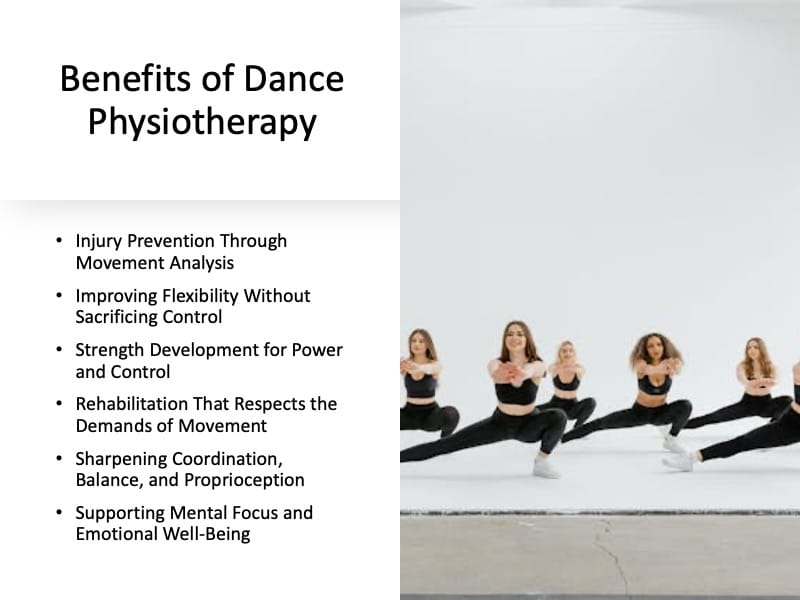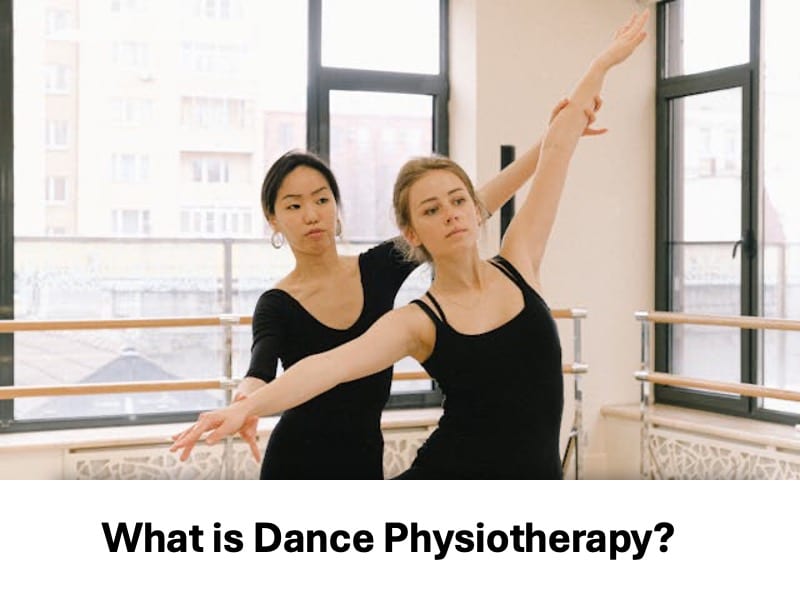What is Dance Physiotherapy, and Why is it Good for You?
Dance physiotherapy is a specialized form of physical therapy designed to meet the high physical demands of dancers, but its benefits extend far beyond the dance world.
Whether you’re a professional dancer, recreational mover, fitness enthusiast, or someone recovering from an injury, dance physiotherapy offers tools for building strength, flexibility, control, and resilience in the body.
As many as 80% of dancers experience at least one significant injury during their career, making proactive care essential (Allen et al., 2012).
Dance physiotherapy isn’t just about fixing injuries—it’s about maximizing the body’s potential through precise, functional movement that supports longevity and performance.
Who is Dance Physiotherapy For?
Although developed with dancers in mind, this form of physiotherapy is ideal for:
- Professional and pre-professional dancers who need to maintain peak condition while preventing overuse injuries.
- Dance students and recreational dancers looking to build proper technique, flexibility, and endurance safely.
- Former dancers or performing artists seeking rehabilitation support or ways to stay active while honoring past injuries.
- Athletes and movement professionals like gymnasts, figure skaters, cheerleaders, or martial artists who require similar physical demands.
- Non-dancers recovering from injury or dealing with posture, balance, or mobility issues who benefit from the controlled and graceful movement patterns used in dance-based therapy.
This approach is especially helpful for anyone interested in maintaining joint integrity, improving balance, or enhancing the mind-body connection.
Benefits of Dance Physiotherapy

Dance physiotherapy offers a science-backed approach to unlocking physical potential while reducing the risk of injury.
By combining therapeutic exercise, manual therapy, and movement analysis, this specialized practice enhances performance and supports long-term wellness.
Whether you’re performing pirouettes on stage or simply aiming to move more efficiently in daily life, the benefits of dance physiotherapy extend across strength, mobility, coordination, and mental clarity.
Injury Prevention Through Movement Analysis
A dance physiotherapist is trained to identify imbalances in posture, joint alignment, and muscle recruitment before they evolve into injuries.
Detailed assessments uncover weak links in a dancer’s kinetic chain, allowing for the development of tailored corrective exercises.
This early detection system helps reduce chronic issues such as tendinopathy, lower back pain, or hip instability—problems that often arise from overuse or faulty mechanics.
Improving Flexibility Without Sacrificing Control
Flexibility is critical for dance, but hypermobility without strength can lead to injury.
Dance physiotherapists balance flexibility training with stabilization work to ensure dancers gain usable, controlled range of motion.
This means greater reach, more fluid movements, and reduced risk of ligament stress or joint dislocation—benefits that are equally useful for athletes, yoga teachers, and aging adults aiming to preserve mobility.
Strength Development for Power and Control
Dance requires dynamic strength—not just in the legs, but also in the core, feet, back, and shoulders.
Physiotherapy programs for dancers incorporate strength exercises that enhance performance while preserving mobility and artistic expression.
Dancers need to execute intricate choreography with precision, which requires stabilizing, leg, and core muscles that function effectively.
Physiotherapy for dancers comprises strength training drills unique to large muscle groups that help deliver maximum power, stability, and endurance.
The drills are individualized based on each dancer’s body structure and role, to enhance strength without compromising flexibility.
For non-dancers, this approach offers a way to develop deep stabilizing strength, improve posture, and prevent falls or injuries during daily activities or athletic performance.
Rehabilitation That Respects the Demands of Movement
Dance physiotherapy provides highly specific rehab protocols for injuries ranging from ankle sprains and hip impingement to lumbar strain and patellofemoral pain.
Treatment includes soft tissue therapy, active mobility drills, and progressive strengthening that mimics real performance demands.
For anyone recovering from injury—dancer or not—this style of therapy offers a movement-rich, functional recovery strategy that emphasizes long-term resilience.
Sharpening Coordination, Balance, and Proprioception
Dance physiotherapy targets the neuromuscular system through balance training, core activation, and coordination drills that improve body awareness and stability.
These exercises help dancers perform precise movements like turns and jumps while protecting joints and tissues.
For older adults or individuals recovering from neurological events, these same techniques help rebuild proprioception, prevent falls, and restore confidence in movement.
Supporting Mental Focus and Emotional Well-Being
Physical performance is deeply tied to mental clarity and self-trust. When dancers feel physically prepared, they experience lower anxiety, improved presence, and greater confidence on stage.
Dance physiotherapy may also include relaxation techniques, breath work, and mindfulness to regulate nervous system activity.
These benefits can be just as valuable for individuals dealing with stress, anxiety, or body image issues, as they promote holistic wellness and inner calm.
Final Thoughts: Why is Dance Physiotherapy Good for You?
Dancing is a great way to get fit without going to the gym, but it also places unique demands on the body that require proper conditioning, injury prevention strategies, and recovery support to sustain long-term performance and health.
Dance physiotherapy is far more than a recovery tool—it’s a performance enhancer and preventive strategy built on principles of biomechanics, movement science, and holistic wellness.
Whether you’re training for center stage, recovering from an injury, or simply looking to move with more grace and strength, this therapeutic approach provides long-term value.
By integrating dance physiotherapy into a wellness plan, individuals at all activity levels can improve mobility, avoid injury, and feel more confident in how their bodies move—today and for years to come.



